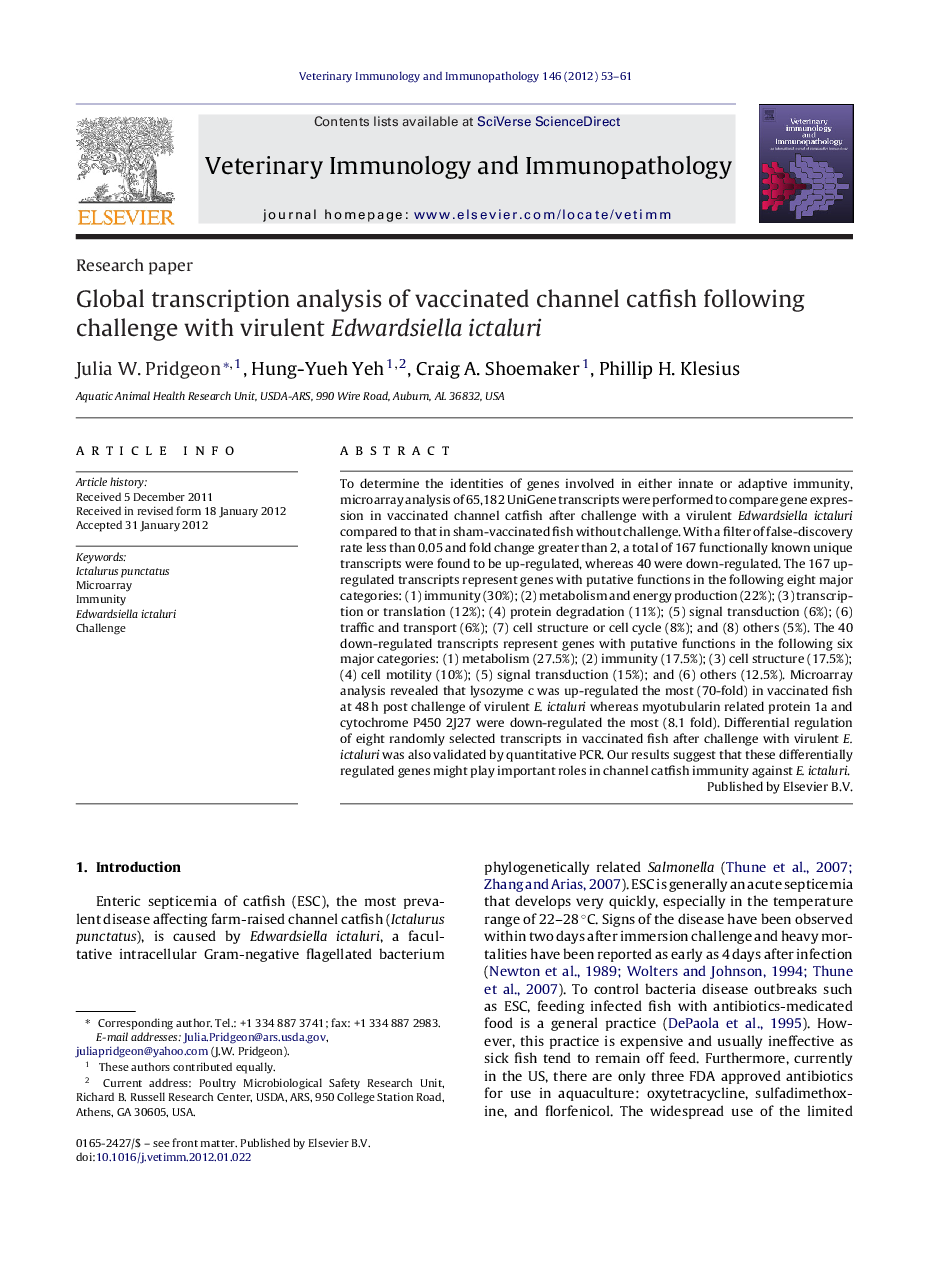| Article ID | Journal | Published Year | Pages | File Type |
|---|---|---|---|---|
| 5796899 | Veterinary Immunology and Immunopathology | 2012 | 9 Pages |
To determine the identities of genes involved in either innate or adaptive immunity, microarray analysis of 65,182 UniGene transcripts were performed to compare gene expression in vaccinated channel catfish after challenge with a virulent Edwardsiella ictaluri compared to that in sham-vaccinated fish without challenge. With a filter of false-discovery rate less than 0.05 and fold change greater than 2, a total of 167 functionally known unique transcripts were found to be up-regulated, whereas 40 were down-regulated. The 167 up-regulated transcripts represent genes with putative functions in the following eight major categories: (1) immunity (30%); (2) metabolism and energy production (22%); (3) transcription or translation (12%); (4) protein degradation (11%); (5) signal transduction (6%); (6) traffic and transport (6%); (7) cell structure or cell cycle (8%); and (8) others (5%). The 40 down-regulated transcripts represent genes with putative functions in the following six major categories: (1) metabolism (27.5%); (2) immunity (17.5%); (3) cell structure (17.5%); (4) cell motility (10%); (5) signal transduction (15%); and (6) others (12.5%). Microarray analysis revealed that lysozyme c was up-regulated the most (70-fold) in vaccinated fish at 48Â h post challenge of virulent E. ictaluri whereas myotubularin related protein 1a and cytochrome P450 2J27 were down-regulated the most (8.1 fold). Differential regulation of eight randomly selected transcripts in vaccinated fish after challenge with virulent E. ictaluri was also validated by quantitative PCR. Our results suggest that these differentially regulated genes might play important roles in channel catfish immunity against E. ictaluri.
